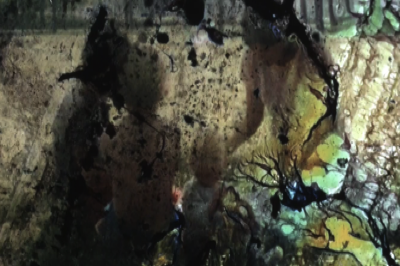DAS LETZTE BILD. AT / 2020. Dokumentarfilm. 70 min.




"What’s it like to live with vision loss, knowing that someday soon you’ll never be able to see the faces of those you love again? This film is a survey of the lives of people living with visual impairments who have either already gone completely blind or are slowly losing sight of the world around them, but still do not give up in their pursuit of happiness and a life of positivity. The film’s protagonists share their feelings, fears, and frustrations, but also their most memorable visual sights, their dreams, and their hope of perhaps one day being able to go on living an almost completely normal life. The film’s lyrical storytelling style, melancholically stylised frames, and fragments of personal archives contrast with the harsh realities of the lives of people living with visual impairments." (Jihlava catalogue text)
THE LAST IMAGE




"From someone who moved away to learn about fear. The flight in the dark to Greenland begins with a farewell to the sun, which glows as a red ball in the cabin window. Upon arrival, camera and microphone have to battle the ice-cold wind. Only fragments of bundled-up figures that have somehow gotten into the circle of light can be discerned; no colors. Nothingness begins in the blackness right next to the flashlight’s beam. Dominating inside, in the island of warmth, are yellow, red, and flesh tones—colors with a high color temperature. Isolation seems to have dissolved here in an atmosphere of mutual trust. Experiences are exchanged, instructions given. The darkness and cold are not only geographical, meteorological, and physical phenomenon—qualities related to the light waves (on film material)—but deeply rooted atavistic ones. Darkness is hostile to life; unpredictable, associated with existential angst and death.
Once again, Judith Zdesar is not concerned with the documentary portrait of a place and the people that live there, just as her film Bilder aus dem Tagebuch eines Wartenden (Images from a Diary of Waiting, 2007) was not about the documentation of young recruits, but rather, about showing their extreme boredom, which they could deal with only through absurd interventions. The present film presents a self experiment in which fear, loneliness, and exposure to a foreign context are explored in a cinematic diary.
Eyes, one’s own and the lens of the camera, gradually adjust to the darkness. It gets lighter in the end. Nuances of gray, blue, and sometimes a fragile pink begin to shimmer from the shapeless void. But polar bears and the unspeakable continue to threaten in the night. One is meant to take care when the dogs bark; but when the dogs always bark?" (Birgit Flos)
FARBEN EINER LANGEN NACHT. AT / 2011. Dokumentarfilm. 70 min
ALL THE SHADES OF ONE LONG NIGHT



"It´s spooky here... It looks really spooky through the camera." - "You have to say this is the Burgenland Project." In fact however the snowy greenish night-vision images, created by recruits stationed on the border between Austria and Hungary, are not on a search for some woodland witch, and the infrared gaze doesn´t capture "illegal border crossers." The soldiers are shooting a film in the eternal ice of a Burgenland winter, with video camera and cell phone, making images of each other getting bored and acting childish (glaciation can be fun too). They do all the stunts themselves and talk cursorily about their situation and their hopes for the future afterward. Judith Zdesar engineered and arranged the images, interspersing them with a few topographic tableaus.
This is a search for the lost, or to be more exact wasted time spent during obligatory military service on the edge of Schengen country, which is embodied by the absurd micro-performances of the young showoffs and in banal, everyday monologs about the sense (or lack thereof) of their presence, enlarged to almost Becket-like dimensions. The situation: No one knows what will happen next. Its unsettling aspect: Even capturing migrants would seem to be a reasonable option, but the soldiers are too far from the border for that to happen - a war movie without a war. The only thing that remains is concentrating on one´s own emotional situation. When your existence becomes a kind of service and your superior has lost the authority which gives him meaning, service on the border becomes a borderline case of filmic/linguistic representation. Though these Images from a Diary of Waiting seem strange and foreign, they have more to do with us than we would prefer. Lo-fi science fiction without a future, the soldiers themselves are the aliens, and the enemy looks like your best friend. Really spooky." (Michael Palm)
BILDER AUS DEM TAGEBUCH EINES WARTENDEN. AT / 2007. Dokumentarfilm. 25 min.
DIARY OF SOMEONE WAITING



SPECIAL MENTION BEST EAST EUROPEAN DOCUMENTARY "BETWEEN THE SEAS": THE LAST IMAGE (dir. Judith Zdesar / Austria, 2020)
Jury statement: "For its poetic aesthetics, in search of a sensory representation of a daily and familiar environment, and for its visual creation of a memory that permanently disappeared by bringing glimpses of light in a world of darkness."
